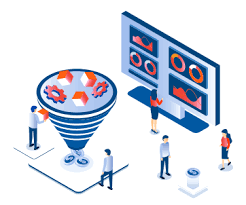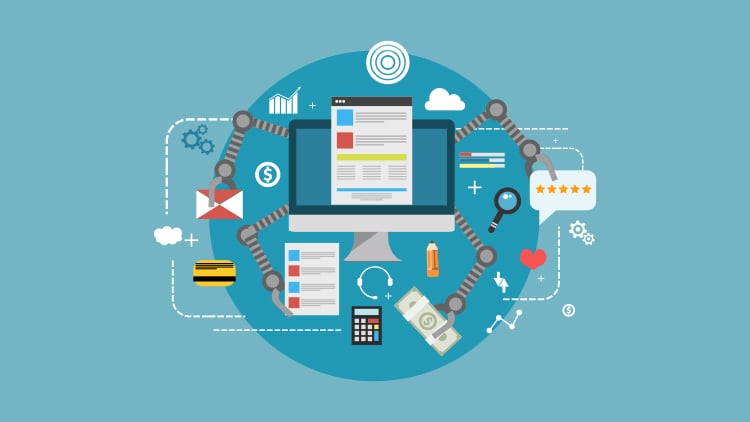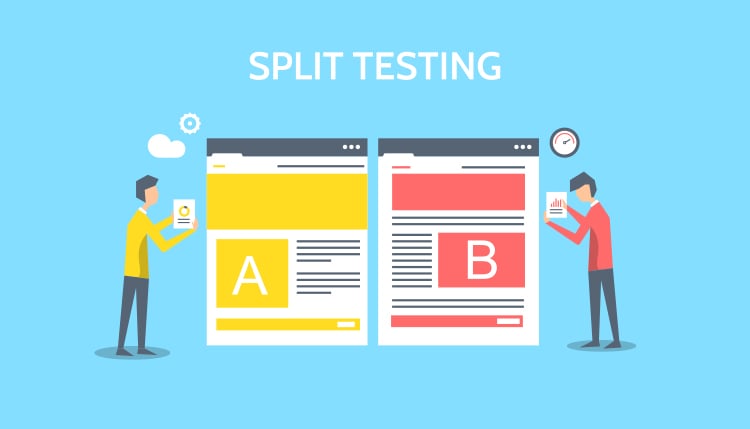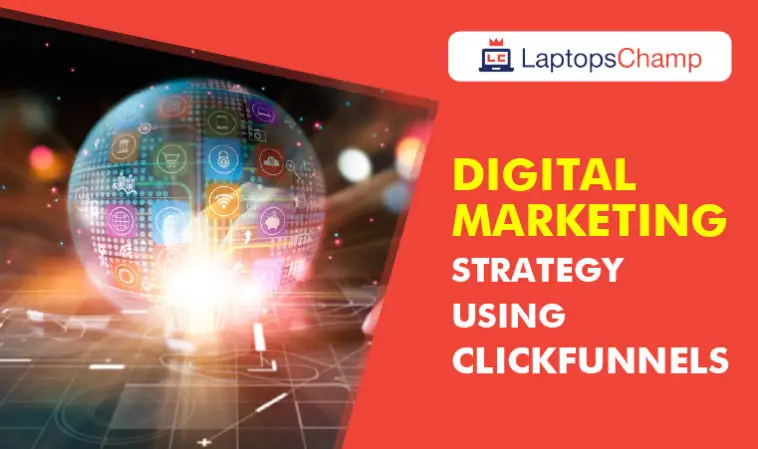6 Essential Steps
-
Set Up a Marketing Strategy Plan and Create Goals You Can Measure
Your digital marketing plan requires an understanding of search engine optimization (SEO), social media, e-mail marketing, and more. However, before you execute with any of these tools, you first need to assess your needs and set goals.
Think about the segment of the market that you serve, and create products that best bridge that gap. When you understand your customers, it’s easier to guide people into the sales funnel, rather than trying to force the issue.
Learn your target audience so that you can create landing pages that hit their mark and convert. Once you add Clickfunnels to the mix, you will also be able to work on generating leads, generating sales, or promoting a webinar or other event.
-
Start With Amazing Content That Draws People In
The name of the game is to entice people into your funnel, rather than forcing them into it. A high-quality sales letter or video will take some time and effort but will pay for itself once you see how effective it is.
Create content that not only hits its mark with your consumer but also hits its mark at the right time. With the Clickfunnels dashboard, you’ll have control over every step of this process. It helps you know what details your customer will want to find out about, at different segments of the funnel.
-
Use Infrastructure That Guides the Consumer Through the Funnel Step by Step
You will be better able to create a working sales funnel when you have infrastructure that will guide the user through it piece by piece. Without question, Clickfunnels has everything that you need at the very start.
This software features a number of different templates that you can customize however you’d like. It begins with a landing page, which can take people’s e-mail addresses and other contact info. This is a crucial part of the puzzle because it lets you collect e-mail addresses in order to build your marketing list.
From there, Clickfunnels lets you create a sales page. The sales page builds value with your consumer so that they will want to learn more about the product and add it to their life.
Even if the customer doesn’t make a purchase today, this value should create a spark in them that makes them interested in what you offer.
These steps seem straightforward on the surface, but so many marketers make the mistake of bogging their users down with too much, too fast.
Clickfunnels lets you time out your information in a way that works so that your consumer doesn’t feel confused or overwhelmed. Keep in mind that the average human’s attention span today is only 8 seconds, so you have to catch people quickly and keep them.
-
Build Landing and Sales Pages That Inspire People to Take Action
Your page should inspire every bit as much as it informs. From the time that your user enters the funnel, they should be urged to take action. Everything from the information you include, the colors you use, and word choices dictate whether or not a person feels compelled to take action.
This content should be well-written by a professional and should include statistics and other quick-hit facts. Make sure that you are also including a strong call to action (CTA) that scales down options and tells the user exactly what you want them to do. This cuts out any confusion and will help you to grow your conversion rates.

-
Have Contingencies in Place in Case Your Customer Clicks Out
Never be afraid to follow up! Just because a person clicks out doesn’t mean that all is lost. People get busy all the time, and may just forget to come back. The follow-up is essential to any marketing strategy plan. However, you can use Clickfunnels to automatically follow back up with these customers.
The software platform allows you to write content that reminds them to come back and offers more information that they will find useful. These consumers will receive e-mails from you after a certain amount of time has passed. This step alone doesn’t cost you any more time or effort but will allow you to improve your conversions and customer retention.
-
Have Your Upsells Ready to Go
You’ll really rake in more profits when you include upsells. This marketing strategy example is one of the most effective and timeless. It’s no different than how grocery stores place magazines and candy in checkout lines.
Price these upsells at a discount, and make sure to include them at the time of checkout, during which your customer already has their mind made up about spending money. With Clickfunnels this is easy as pie. The software comes with 1-click upsells that you can include at the end of the transaction.
Clickfunnels is also one of the most secure platforms that you’ll find. It securely processes the payment and quickly and seamlessly delivers products to your customers once the payment goes through.
Digital Marketing Strategy Using Clickfunnels
If you’re trying to thrive in today’s e-commerce landscape, it’s important that you employ digital marketing strategies that work. Clickfunnels is a software package that you can subscribe to when you’re trying to work on any marketing strategy plan.
It features an easy-to-use layout and several tools that will help you to connect with your customers effectively. Read on to learn more about creating the best digital marketing strategy, which you can leverage to the fullest by using Clickfunnels.
In today’s marketing industry, data continues to play a big role in overall strategy and tactics.
It’s through data that digital marketers can see what campaigns are performing well and what is leading to conversions.
Data analysis can help businesses create new and innovative strategies for future campaigns.

So, are you taking full advantage of what data-driven marketing can do for your funnel?
Or are you looking to improve your current digital marketing strategy?
In this article, we’ll discuss what data-driven marketing is, why it’s important, five ways you can improve your data-driven marketing approach, and how ClickFunnels software can give you an advantage.
What is a marketing campaign?
A marketing campaign is a plan that uses various marketing tactics — advertising, influencer marketing, SEO, etc… — to accomplish some business goal (sales, lead-gen, brand awareness, etc.).
Knowing how to plan marketing campaigns effectively is a critical skill for entrepreneurs, marketing managers, CMOs, and anyone else who has top-level control over a business’s marketing efforts.
There are different types of marketing campaigns with different goals (more on that next). There are also many different templates, tools, and systems for creating successful marketing campaigns.
In this guide, we’re going to provide what we think are the most effective tools and systems for building marketing campaigns that get real results.
The 5 Main Types of Marketing Campaigns
There are many different types of marketing campaigns.
Social media advertising, influencer marketing, SEO, display ads, direct mail, cold calling, and a bazillion more.
But we think the 5 main buckets are organic lead-gen campaigns, paid lead-gen campaigns, cold-to-customer advertising, follow-up funnels (paid and unpaid), affiliate marketing, welcome email sequences, and daily emails.
Let’s dive into the details.
1. Lead-Gen Advertising
Here, we define lead-gen advertising as any marketing campaign where you pay to get in front of your target market and generate leads.
That includes Facebook advertising, Google advertising, display ads, and influencer marketing (if paid).
When we say the goal is to “generate leads”, we’re specifically talking about getting the person’s email address, although you might also try to capture the visitor’s phone number, name, and address.
Here, for example, is an advertisement where WordStream is giving away a free downloadable guide in return for people’s email addresses.
2. Lead-Gen Organic
Lead-gen organic marketing is the same as lead-gen paid except (you guessed it) you get in front of your target market and generate leads through unpaid means — namely, SEO, PR, influencer marketing (if unpaid), content marketing, and manual outreach.
To give you an example of what this online marketing looks like, imagine that you search Google for “best blog headlines” and you click on the first result, which is from HubSpot.
To download that resource, you’d have to give HubSpot your email and become a lead.
So you found them organically through SEO and then became a lead by downloading their free resource. That’s just one example of lead-gen organic.
3. Cold-to-Customer Advertising
What if you could skip the lead-gen piece altogether and simply turn cold traffic — people who’ve never had significant interaction with your business before — into paying customers?
That’s what cold-to-customer advertising is all about.
In this type, the marketer creates a compelling offer that they know their target market won’t be able to resist and runs ads to get traffic and make sales.
One example of this comes from what’s known as the Tripwire Funnel, a sales funnel that’s built to turn cold traffic into paying customers.
This sales funnel consists of three pages, the two-step sales page, the OTO (one-time-offer) page, and the offer wall page.
4. Follow-Up Organic
Follow-up organic is a marketing campaign where you follow up with your leads via email, text, phone, or even direct mail.
Follow-up is a critical part of any marketing campaign — you’ll never convert everyone on the first go around, so additional outreach is necessary.
The abandoned cart email is one example of a follow-up organic marketing campaign.
5. Follow-Up Paid
Follow-up paid is the same as follow-up organic except you’re paying to get in front of your leads.
To be clear, this is typically less cost-effective than just emailing, texting, or calling your existing leads — since you don’t have to pay to reach them… why would you?
But still, sometimes running retargeting ads to your existing leads can get their attention in a way that other methods might not.
How Does a Digital Marketing Funnel Work?
If you think about the fundamental use of a funnel, you place the funnel where you want something to pour into, then you pour the substance into the funnel and it fills the container.
A digital marketing sales funnel follows the exact same concept. First, you build your sales funnel to achieve a specific objective – a customer purchasing XYZ product/service from your business.
Then you fill your sales funnel with traffic using digital marketing tactics to drive that traffic from the top of the funnel to the bottom of the funnel where they convert into a paying customer and become an advocate for your local business.
AIDAA – Digital Marketing Funnel Formula
Most digital marketers will tell you that digital marketing sales funnels utilize a 4 or 5-stage funnel following the AIDAA formula.
- Awareness
- Interest
- Desire
- Action
- Advocacy
Each letter of the formula represents a stage throughout the digital marketing funnel. In order to convert a visitor into a customer who is an advocate for your brand, you have to nurture them from the time they enter the funnel until they become a customer.
With that said, not every person who enters your digital marketing sales funnel will turn into a customer. However, you can greatly improve your odds by utilizing this formula to establish a lasting relationship with the prospect.
What Are The Components of Digital Marketing Sales Funnels?
Obviously, this is easier said than done so let’s break down the three main components of a digital marketing funnel:
- Foundation – Defining your objective
- Floodgates – Getting traffic into your funnel
- Sales Funnel – Moving traffic from the top of the funnel to the bottom
1. Foundation – Defining Your Digital Marketing Sales Funnel
Before you can begin to build out your digital marketing sales funnel, you first must conduct research and build a strategy to ensure maximum efficiency is achieved with your sales funnel.
Conducting a complete competitor analysis, developing SMART goals, and identifying your buyer personas are extremely important to the success of your funnel. Here are some great links to resources to help you conduct your research and build out your digital marketing sales funnel strategy.
Next in the digital marketing funnel strategy is creating your value ladder and mapping your funnel. For the sake of brevity, we’ve provided the following links to get you started on your value ladder and mapping your sales funnel.
2. Floodgates – Filling Your Digital Marketing Funnel With Traffic
Traffic into your funnel can come from many different places whether it be search engines, social media, advertisements, email campaigns, offline events, etc. The best performing sales funnels are those that utilize all sources as a means to generate traffic into the digital marketing sales funnel.
Social Media Marketing
Social media marketing is a great route to take to bring customers you’ve engaged with into your funnel and also keep your loyal customers up-to-date on new specials and offers.
Tips for Social Media Marketing Traffic:
- Follow the three E’s rule of posting
- Educate – inform your followers with content to educate them on topics relevant to your industry
- Entertain – show your business’ culture with content they’ll enjoy and also be able to relate to/learn about your business
- Engage – always respond to messages, comments, and questions, but don’t stop there. Create polls, surveys, and questions for your followers to engage with frequently.
- Throw multiple jabs before you ever try to land a hook
- Post regularly following the 3-E rule without asking for anything in your posts. Deliver superb content and information to your followers > engage with them > and then deliver the right hook for a striking blow to get those followers to sign up for your offer and enter your funnel.
- Brand every post with your company
- Include your logo in all images – subtle but well defined
Search Engine Optimization
Search engine optimization is one of the best long-term sustainable approaches to getting digital marketing traffic into your funnel. The objective is to rank your website at the top of Google for designated keywords so that when visitors are searching for the information you’re offering, they click your website and are now in your funnel.
Paid Advertising
Advertising comes in many shapes and forms from Facebook ads to Google Adwords. No matter the medium on which you advertise, the objective remains the same – filling your funnel with relevant traffic.
Marketing Events
Marketing events are a great source of traffic into your funnel. Events can come in many different formats from online webinars to in-person charity events to marketing funnels in minutes. Use these events as a means to connect with your prospective customers, generate awareness for your brand, and encourage people to check out your website (preferably a page designated for the event or similar). This will drive visitors into your funnel and provide retargeting opportunities through ads via Facebook or Google.
Email marketing
Tactics used to nurture digital marketing funnel traffic can vary significantly from chatbot integrations, SMS/Voicemail campaigns, etc. however, one of the best strategies is through the utilization of email marketing automation.
Essentially, when a customer subscribes, downloads, or signs up for something on your website, you can capture at minimum their name and email address (we recommend phone number as well if applicable). Once they’ve subscribed, tools like ActiveCampaign provides and decision-tree-styled automation system to send email campaigns that you designate to those customers.
When implementing a digital marketing sales funnel, be sure to incorporate email automation campaigns to entice your prospects to move to the next stage in your funnel.
3. Sales Funnel – Move Your Digital Marketing Traffic From Top to Bottom
At last, we get to the actual funnel itself.
The physical funnel is comprised of 3 components: a lead magnet, an amplified, and a conversion event. Depending on your objectives for your funnel, you can have upsells, downsells, gated content, etc.
No matter the case, the function remains the same: enticing a visitor to give up their contact information (and/or other pertinent information with respect to your objectives) in exchange for something of value to them.
With respect to the visitor’s stage in the funnel, content exchanged can include a free e-book or webinar, discounts on a service or product, a contest/promotional offer, etc. The opportunities are truly endless.
The Lead Magnet for Your Sales Funnel
To set up the lead magnet for your digital marketing sales funnel, there are several tools you can utilize. Below is a list and links to our favorite tools for building lead magnets and web pages.
- Leadpages
- Clickfunnels
- Divi Builder
- Instapage
Pro-tips for the best lead magnet designs:
- Eliminate all distractions on the lead magnet that aren’t correlated with the objective your trying to achieve
- Reduce/minimize the number of links away from your lead magnet – you want to keep them on the page and convert them into a lead/purchase, etc.
- Make sure your offer is clear, competitive, and relevant to your target audience
- Your headline should GRAB THEIR ATTENTION and encourage them to continue reading the remainder of the page
Amplify Your Digital Marketing Funnel
The lead magnet is meant to draw the visitor into your funnel and attract them to stay more. The amplifier serves the purpose of hooking the visitor to become compelled into taking action with you.
Great tools to use as an amplifier are videos, testimonials/reviews, webinars, demos, social proof, etc. Incorporating an amplifier into your landing pages will reaffirm the visitor’s interest in the offer and assist them in removing any doubt/anxiety about the conversion. Obviously, depending on the stage of the funnel, you may or may not need a more impactful amplifier.
Getting Your Digital Marketing Sales Funnel to Convert
You have done a lot up to this point, you should be proud of yourself. Now, the moment of truth sets in; do you have everything set for the visitor to convert by giving you their information?
Generally speaking, the more difficult it is for someone to get access to what they want, the more likely they’ll leave and go somewhere else. With that said, your goal should be to make information college as smooth as possible.
Here are some tips when setting up your forms to get the visitor to convert:
- Make it easily found. Usually, it is best to place the form or a button for a form at the top of the screen and then again at the bottom of the screen.
- Only collect the information you truly need
- Don’t ask for too much information at the top of the funnel. A good rule of thumb is at the top of the funnel, only collect name and email and as they progress through the funnel, you can collect more personal information (ex: phone, budget, marital status, address, etc.)
What is Big Data Marketing?
Big data marketing, or data-driven marketing, is exactly what it sounds like.
It’s creating and applying marketing tactics based on data collected and analyzed from current and previous campaigns.
The type of data collected can range from customer views to engagement and click-through rates.
By analyzing your collected data, you can predict future customer actions by applying new tactics that will help grow your audience and overall conversions.
Examples of data-driven marketing strategies include retargeting, email campaigns, and search engine optimizations (SEO).
In short, the most successful way to improve conversions of your sales funnels is by using data-driven marketing tactics.
Why is Data-Driven Marketing Important?
In addition to what was mentioned above, there are many benefits to using data-driven marketing in your funnel.

First, you can create individualized campaigns from the data collected and target potential customers.
Data allows you to truly understand who is interacting with your brand, as well as who you can successfully target.
As such, from personalization, you can garner more effective campaigns, as personalized messaging can lead to higher engagement and conversion rates.
Secondly, data-driven marketing can help you improve and polish your current branding by seeing what tactics are and are not working.
From the data analysis, you can see what within your content — messaging and visuals —engages your customers the most and build off of that information.
When you do this, it can help boost the customer’s overall experience and build value and trust something necessary for creating a loyal following.
Data-driven marketing can also help with product development, by understanding what your customer base needs and wants.
From there, it can play an integral role in creating and launching a product you know your customers will use.
Fewer failed product launches occur when organizations use data-driven marketing.
Lastly, data-driven marketing opens the door for more efficient and automated systems — helping you get the most out of your future campaigns.
5 Ways You Can Improve Your Data-Driven Marketing
Improve your data-driven marketing tactics and see how ClickFunnels can help with these five tips below.
1. Make sure your data is accurate and ClickFunnels integrations are set up correctly
First, you need to make sure you’re gathering and analyzing the right type of data that will lead to a conversion increase.
As such, it’s important to revisit the data you’ve collected inside of your ClickFunnels, account.
Actionetics has tools that help users better understand their funnel audience so they appeal to them in the right way with the right messaging and visuals.
Look in your Actionetics account for the type of data you’re currently collecting and make sure your funnel content is catered to your funnel audience.
This includes adding more tags to classify your new customers based on their actions or revising your autoresponder messages.
Furthermore, Wicked Reports has integrated with Actionetics, helping you convert your funnel visitors into customers and track their behavior over time.
Through Wicked Reports, you can track first clicks, first opt-ins, re opt-ins, and last clicks, and attribute them all to revenue.
All of those factors are key when building new campaigns, whether it’s brand awareness or launching a new product.
How can you set up your Actionetics account with Wicked Report? Follow these two steps:
-First, export all of your contacts from Actionetics in a CSV file and send the file to Wicked Reports so they can import your contacts.
-Next, integrate all of your funnels inside ClickFunnels with Wicked Reports using Webhooks.
Repeat the setup process for each funnel, but only send Wicked Reports one contact CSV file.
2. Automate

You save a lot of time when you implement automation into your data-driven marketing campaigns.
Luckily, automation is built into both Actionetics and Wicked Reports. Take advantage of the automation so you can organize your audience into segmented lists, build autoresponders, create automated email sequences, and more.
3. Optimize search (SEO) and social channels

According to Bambi woods, search engines were responsible for 34.8% of total website visits, whereas social media was responsible for 25.6% of total website visits.
This recent trend shows how important it is to optimize SEO marketing tactics in addition to your social media efforts.
Take the time to research and develop specific campaigns that relate to the platform you’re using. Check out this post on effective keyword research for your business.
Through Actionetics, it’s easy to identify who is visiting your funnel and then build specific personalized content campaigns that will target them both on Google and through social media.
Doing so can help position yourself higher within search results as well as on social, helping bring more people to your funnel.
4. Split Test

How often are you split testing your content within your funnel?
Chances are you should be split testing even more in order to refine your messaging so it’s best suited for your current and target audience.
The data you collect from split testing will give you a better insight into your audience.
If you don’t know what to test, start with an already high converting landing page, and from your data analysis of your audience, change the content slightly to see if you gain even better results.
With ClickFunnels, you’ll get automated results within your funnel dashboard, so you can make the necessary adjustments and not lose out on conversions.
However, not everything within your funnel should be tested, just critical components of your funnel, such as the main landing page.
Click here to learn more about split testing and how to split test in Clickfunnels
5. Take risks

Lastly, don’t be afraid to take risks and think big when testing content.
When you see the latest data trend in your analysis, run with a creative idea and capitalize on your current data.
Even if these risks don’t pan out, you still gain a valuable lesson and can move forward.
Also, don’t be afraid to be more transparent with your customers by sharing your data in a visual matter.
Detailed infographics not only drive more people to your landing page but can add value to your brand.
Especially if your data tells a story, it’s a great way to increase your expertise within your industry and instill trust.
As you can see, ClickFunnels offers the tools you’ll need to take your data-driven marketing strategies to the next level.
Increase click-through rates and conversions by implementing the five points above in your digital marketing strategies.
Conclusion
Your digital marketing strategy will take off with the right information and the use of software like Clickfunnels. Now that you see exactly how to build funnels and leverage your traffic, you can begin putting out products that will grow your sales revenue.
Start looking into Clickfunnels, and take advantage of the 14-day free trial that the company offers. In the meantime, we would be happy to help you out with any questions you have about laptops or peripherals. Reach out to us with our online form, or e-mail us at info@laptopschamp.com.




![2nd Laptop Makes A Great Monitor [Quick and Easy Trick] 15 2nd Laptop Makes A Great Monitor](https://cdn-0.laptopschamp.com/wp-content/uploads/2022/03/A-2nd-Laptop-Makes-A-Great-Monitor-1-150x150.jpg)

